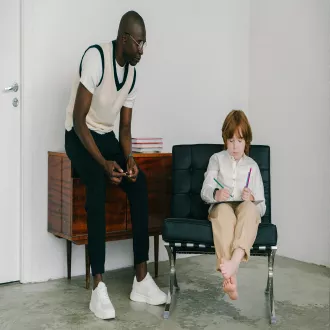Transcription The blocks of thought: mental images and concepts
Mental Imagery: Sensory Representations in the Mind
Psychologists who study cognition have identified mental imagery as one of the fundamental building blocks of thought.
These images are defined as representations that form in the mind about an object or event, allowing us to manipulate information internally.
It is very important to understand that these mental representations are not exclusively visual in nature, since each of our sensory modalities can produce them.
For example, the ability we have to hear a complete melody inside our head involves the use of a mental image that is auditory.
Research has even shown that simply mentally rehearsing a piano exercise can generate brain activity that is almost identical to the actual practice.
Concepts: The Categorization of Our World
Concepts are another of the fundamental elements of thought, and are defined as mental groupings of objects, events, or people that are similar.
This cognitive ability allows us to organize the immense amount of complex phenomena into categories that are much simpler and therefore easier to use.
By using these categories, we can simplify the world, such as when instead of listing every object in a kitchen, we simply respond with the category "food" or "dishes."
Concepts, therefore, are an essential tool for thinking, as they help us think more efficiently and communicate better with others.
Prototypes as Representative Examples of the Concept
Many of the concepts we use in our daily lives, such as "bird" or "table," do not have a strict definition, but rather a set of characteristics that are general.
In order to handle these more ambiguous concepts, our mind often thinks in terms of examples that are known as prototypes.
A prototype is an example that is very typical and highly representative of a concept, and that corresponds to our best mental image of that category.
For example, although an ostrich is a bird, the image of a robin comes to mind much more easily for most people.
In this way, the robin becomes the prototype of the concept "bird", since it is the example that best represents the general characteristics of that category.
the blocks of thought mental images and concepts




